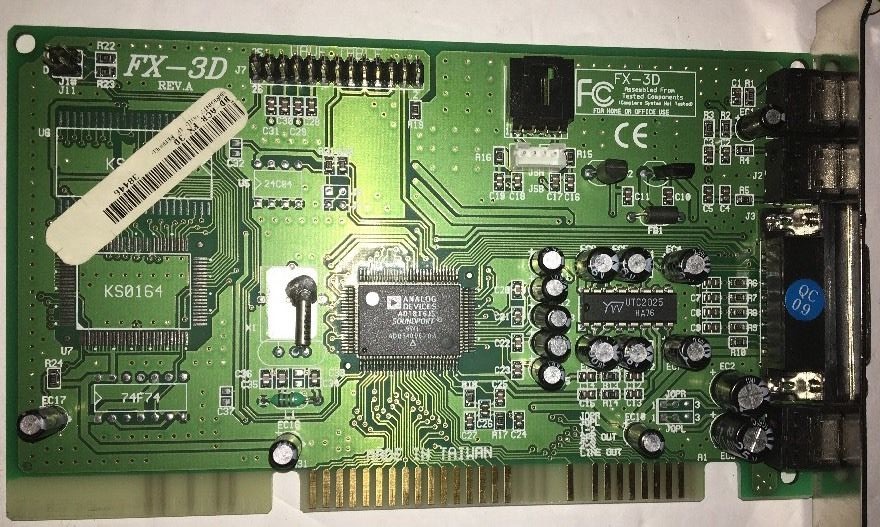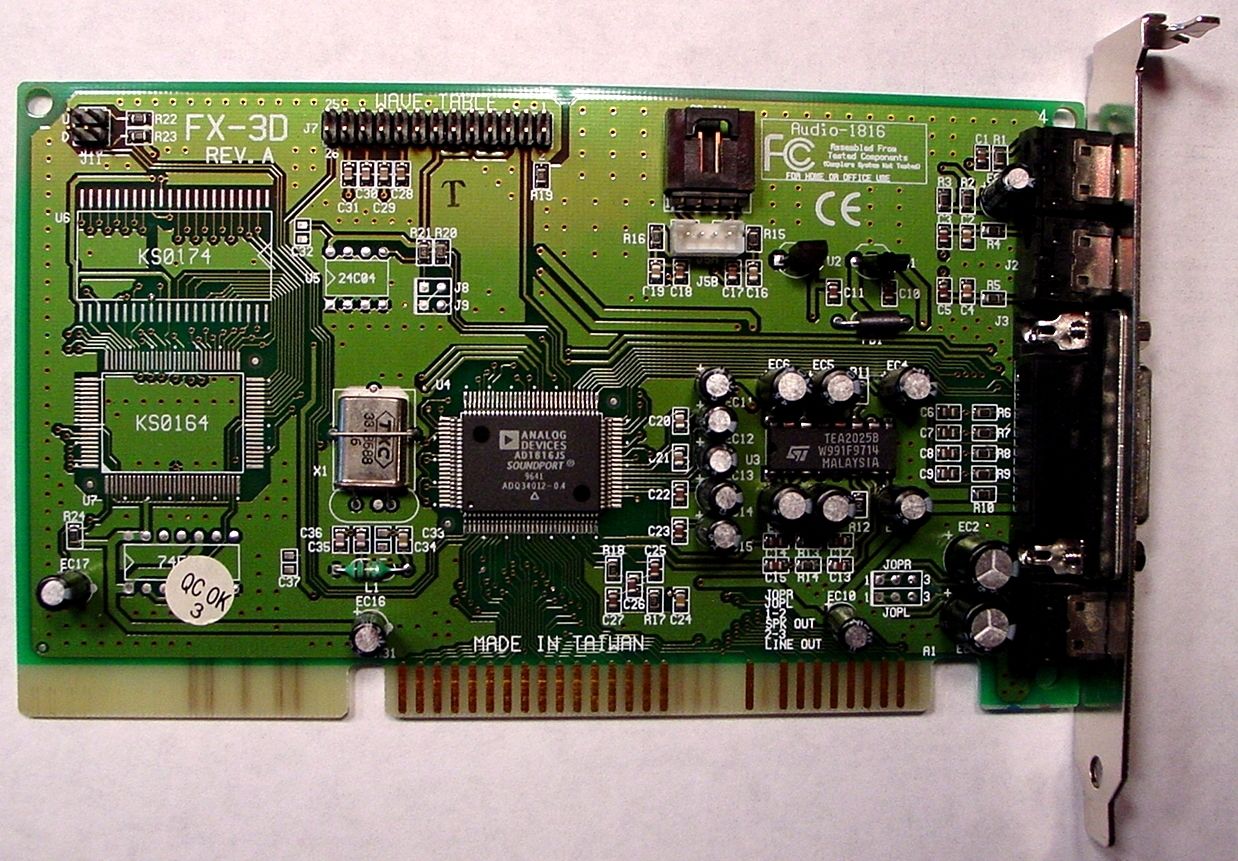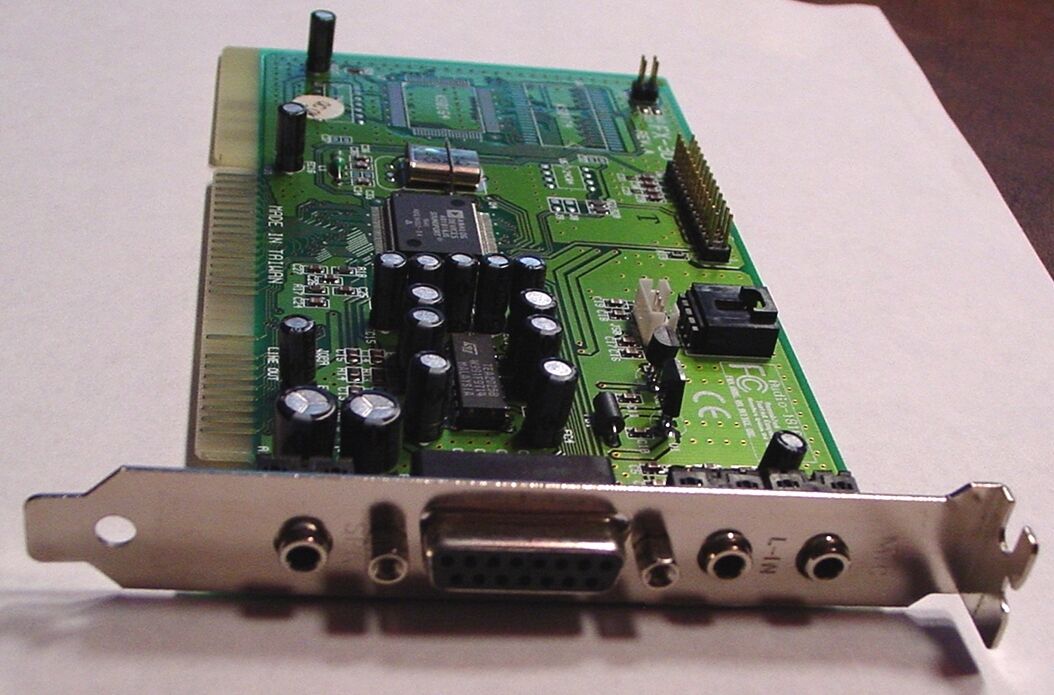AOpen, a subsidiary of Acer, was a manufacturer of motherboards and sound cards for the IBM PC and its compatibles during the latter few years of the DOS era, first founded in late 1996.
Based in Taipei, Taiwan, they started as the "Open System Business Unit" of Acer Computer Inc. Today they specialise in ultra small form factor platforms. Their website can be found at https://www.aopen.com/.
AP53
Year: 1996
Type: Socket 7
Form Factor: Baby AT
Power Connector: AT
Chipset: Intel 430HX
Expansion: 3 x 16-bit ISA, 4 x PCI
Memory: 4 x 72-pin SIMM (ECC and non-ECC). Max 512 MB.
BIOS: AMI PnP
BIOS Dates: 06/13/96
Known Board Revisions: 3.0
This board supports Intel Pentium from 75 MHz up to 200 MHz (3.3V CPUs), as well as Cyrix 6x86 P120+ up to P166+ CPUs. Supports 66 MHz FSB. Comes with 512 KB of L2 cache onboard.
User Manual
|
AP55CS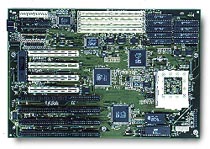
Year: 1996
Type: Socket 7
Form Factor: Baby AT
Power Connector: AT
Chipset: SiS 5501/5502
Expansion: 4 x 16-bit ISA, 4 x PCI
Memory: 4 x 72-pin SIMM (ECC and non-ECC). Max 128 MB.
BIOS: Award PnP
BIOS Dates:
Known Board Revisions:
Supports AMD K5 and K6, Cyrix M2, and Intel Pentium.
66 MHz FSB.
256 KB L2 cache onboard.
Single USB 1.1 port.
User Manual |
AP57
Year: 1996
Type: Socket 7
Form Factor: Baby AT
Power Connector: AT
Chipset: SiS 5571
Expansion: 4 x 16-bit ISA, 4 x PCI
Memory: 4 x 72-pin SIMM
BIOS: Award PnP
This board supports Pentium P54C, Pentium MMX 150-233 MHz, Cyrix 6x86 P120+ up to P166+, AMD K5 from PR90 up to PR166, and K6 PR166/PR200.
CPU core voltage ranges from 2.5V - 3.45V.
FSB speed is 66 MHz only.
Comes with 512 KB of L2 cache onboard.
A single USB 1.1 port is available.
For Cyrix chips, a jumper on the board (JP22) can be used to set Linear Burst Mode on.
User Manual |
AP5S
Year: 1996
Type: Socket 7
Form Factor: Baby AT
Chipset: SiS 5511
Expansion: 4 x 16-bit ISA, 4 x PCI
Memory: 4 x 72-pin SIMM. Max 256 MB.
BIOS: Award PnP
BIOS Dates: Rev 1.2
Known Board Revisions: 2.0
This board supports Cyrix 6x86 P120+ up to P166+ CPUs, AMD K5 and K6, and Cyrix M2.
FSB speed is 66 MHz only.
Comes with 256 KB of L2 cache onboard.
A single USB 1.1 port is available.
User Manual |
 AP5T AP5T
Year: 1997
Type: Socket 7
Form Factor: ATX
Chipset: Intel 430TX
Slots: ISA (3 x 16-bit), PCI (4)
Memory: 4 x SIMM, 2 x DIMM
BIOS: Award
Known Revisions: 3.1
This board comes with 512 KB L2 cache onboard. This 430TX chipset board features CPU temp monitoring, 512 KB L2 Cache, 2x DIMM, 4x PS/2 sockets, 3x ISA / 4x PCI slots and outstanding quality. This boards runs stable up to 83 MHz, but strangely I had to switch the K6-233 down to 2.9 Volts (!) to run reliably at 250 MHz with the Toshiba SDRAM. The Shuttle HOT-565 has similar features but no switching voltage regulator. AOpen seems to become a reliable manufacturer for 83 MHz boards just the way ABit is doing with the AB-TX5. Both boards support Ultra DMA/2, 64 MB cacheable area (SDRAM or EDO), no ECC support. If you want to use the 233 MHz K6 processor, be aware you get rev. 3 or newer, because you will need 3.2 V support for this CPU. Revision 3.1 also has jumper settings for 2.2 Volts, which the K6 266 most likely will tolerate. The performance of the AOpen TX chipset boards is fine once again, particularly with the K6.
Core voltage support: 3.2V, 2.9V, 2.8V, and 2.2V. |
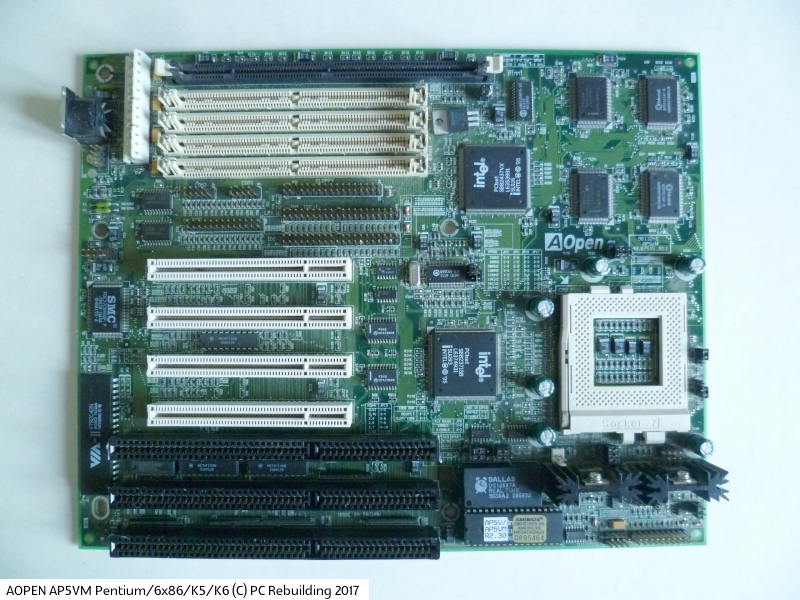 AP5VM AP5VM
Year: 1997
Type: Socket 7
Form Factor: Baby AT
Chipset: Intel 430VX Triton II/III
Slots: 3 x ISA (16-bit), 4 x PCI.
Memory: 4 x SIMM (2 banks), 2 x DIMM,
BIOS: AMI WinBIOS
CPU clock speeds from 75 - 200 MHz, bus speeds of 50 or 66 MHz.
User Manual
User Manual (Revisions 2xx and 3xx) |
AX5T
Year: 1997
Type: Socket 7
Form Factor: ATX
Chipset: Intel 430TX
Slots: ISA (4 x 16-bit), PCI (4)
Memory: 4 x SIMM, 2 x DIMM
BIOS: Award
Known Revisions: 3.0
Revision 3 has some voltage selection jumpers that are probably reserved for 2.1 or 2.2 V core voltage. Thanks to the 430TX chipset it features the same limitations (64 MB cacheable, no ECC) and advantages (UDMA/2, SDRAM support). Its performance is good, as with the AP5T. Other manufacturers should take a look at some of the AOpen features, e.g. the admirable stability at 75 and 83 MHz bus speed; you can say it's more stable than fast at 83 MHz. The only comparable boards are the ABit AB-TX5 and partially the Shuttle HOT-565/569.
Supported bus frequencies are 60-83 MHz.
User Manual
|
AX6B
Year: Spring 1998
Type: Slot 1
Chipset: Intel 440BX (Seattle)
Form Factor: ATX
Power Connector: ATX
Slots: 3 x ISA (16-bit), 4 x PCI, 1 x AGP
Memory: 3 x 168-pin DIMM (Max 768 MB). Supports PC-66 and PC-100.
BIOS: Award
A decent 440BX motherboard with no compatibility issues, can run almost any type of SDRAM, and supports FSB settings from 66 up to 133 MHz.
|
AX6BC
Year: 1998
Type: Slot 1
Form Factor: ATX
Power Connector: ATX
Memory: 3 x 168-pin DIMM (Max 768 MB).
BIOS: Award
Supports the following CPUs: Intel Pentium II 233 to 400 MHz, Pentium III 450 to 700 MHz, and Intel Celeron 300A, 366, and 400.
The memory slots support SDRAM and buffered SDRAM modules.
User Manual |
AX37 Plus / AX37 Pro
Year: 199?
Type:
Form Factor:
Chipset:
Slots:
Memory:
BIOS:
User Manual |
AX59 Pro
Year: 1998
Type:Socket 7
Form Factor: ATX
Chipset: VIA MVP3
Slots: 2 x ISA (16-bit), 4 x PCI, 1 x AGP 2x
Memory: 2 x 72-pin SIMM (FPM or EDO), 3 x 168-pin DIMM (PC-66 or PC-100 SDRAM)
BIOS:
CPU voltages available are 1.0V, 2.0V, 2.1V, 2.2V, 2.5V, 2.8V, 2.9V, 3.2V, 3.45V, and 3.52V.
L2 cache can be either 512 KB or 1 MB, which provides 128 MB or 256 MB of cacheable memory respectively.
BIOS: R2.35 (12 Jul 2000) - Adds support for AMD K6-2+ and K6-III+ CPUs.
|
MX59 Pro (II) (II)
Year: ?
Type: Socket 7
Form Factor: ?
BIOS: R1.27 (26 Jul 2000) - Adds support for AMD K6-2+ and K6-III+ CPUs.
|
 AOpen
AOpen







